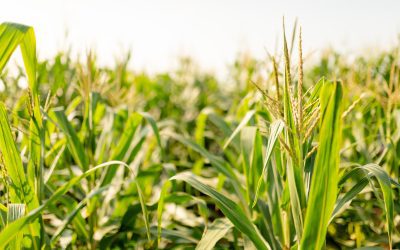INDIANAPOLIS, Ind. — As the potential ramps up for farmers to sell their conservation efforts into greenhouse gas emissions credit markets, the path to do so is littered with far more questions than answers.
Farmers don’t know how much carbon capture contracts might supplement farm income. These are private-market contracts that companies or middlemen offer growers to capture and store carbon dioxide (CO2) in soil as a means of offsetting the purchasing companies’ CO2 emissions.
As of now, there is no government mandate or oversight of a carbon market, which means the impetus for buying credits comes from an individual company’s decision to participate, typically to appeal to consumers as “greener.”
The Indiana Soybean Alliance (ISA) has added a section to its website to provide guidance to farmers about questions to pose when considering whether to sign a carbon credit contract and to clarify terms of the industry. The Ohio Soybean Council (OSC) and the Nebraska Corn Growers Association earlier this year posted their own webpages concerning such contracts.
The ISA webpage, which went live in late June, can be accessed at www.indianasoybean.com/corn-soybean-fieldguide-app/carbon-markets
Julia Brown, OSC communications and project coordinator, said this March its board identified carbon markets as an issue that will be relevant to farmers for the foreseeable future. They realized there was not a one stop shop for OSC members to find answers about carbon markets, so the staff did intensive research to pull the information together.
“It just goes to show how important an aggregate website like this is, because a farmer doesn’t have two weeks to devote to looking all this up,” she pointed out. “The hard part, too, is that these are all private companies, and they’re all setting their own rules. There’s no regulation right now, so we keep describing (the market) as ‘the Wild West.’”
That phrase comes up almost universally from any advisor or expert on the topic. In a June webinar, Purdue University assistant professors of agricultural economics Dr. Nathanael Thompson and Dr. Carson Reeling discussed carbon credit markets, and Reeling noted the concept of an emissions trade market is nothing new. In 2003, the Chicago Climate Exchange kicked off, but it closed in 2010 because permit prices were too low, and “it just never really got going.”
The Regional Greenhouse Gas initiative, which has been going for 12 years, is a mandatory trade market for power plants in the Northeast and Mid-Atlantic states. California began its own state cap-and-trade program in 2013, which is mandatory for electric producers, large industrial emitters and fuel distributors – about 450 entities participate.
By the numbers
This new CO2 credit-buying program doesn’t have a name, nor a central entity managing it. There are a handful of brokerages that arrange contracts and sell the collected credits to end users to offset their carbon emissions. There are even some end users arranging their own contracts with farmers.
Reeling said there has been a “huge amount of movement” within the last year in carbontrading efforts, and it is the first time agriculture has been included in a meaningful way as a potential solution to reducing emissions that contribute to climate change. Thompson explained this is because some specific crop practices such as reduced and no-till and the planting of cover crops have been scientifically proven to capture and store CO2 in the soil.
Using the USDA’s carbon-capture calculator, COMETFarm at www.comet-farm.com, Thompson said he figured if all cropland acreage in the United States were converted to no-till (currently, a little over half – 202 million – are no- or reduced-till), the average amount of atmospheric CO2 the soil could sequester would be about 123 million metric tons per year.
He noted this is equivalent to 2 percent of all U.S. CO2 emissions. If all those acres could additionally be planted in cover crops, that would sequester another 147 million tons annually, or 3 percent of CO2 emissions. (A “unit” of carbon trade is typically 1 metric ton of CO2.) In addition to the potential for earnings, this raises three vital questions for farmers considering contracts: • How much CO2 can soil realistically hold? • Can I collect more than one payment from the same acre of conservation? • Do I qualify for a carbon contract if I already use conservation tillage or cover crop practices?
Thompson said there is an estimated cost of about $40 per acre to switch from till to no-till. A Purdue survey a few years ago showed growers would need to be paid $40-$80 per ton to offset the cost if they could sequester 0.5 to 1 ton per acre. In its research, Brown said the OSC found contracts for as low as $9 and as high as $40, but Thompson said most buyers are paying farmers $10-$20 per ton.
The life of the contract
Fulfilling a contract is not always as simple as storing the CO2 for the life of a contract, which can vary from one year to 20 years. To effectively reduce the effect of emissions on climate, carbon needs to stay in soil – and some buyers require some sort of permanence that extends beyond the life of the contract.
Bayer, for example, has a 10-year contract that requires the grower to continue storage practices for another 10 years beyond that. Gradable from Farmers Business Network lets five-year contracts with another five-year commitment.
None of this compares to carbon capture contracts in Australia. Thompson said buyers there tried to begin by requiring a 100-year multigenerational commitment, but when they didn’t get the level of participation desired, they began offering farmers 25-year contracts at sharply reduced payments.
Reeling said there is a finite amount of new CO2 the soil can absorb. It’s like putting a cup with a tiny hole punched in the bottom under a running faucet – it fills up easily at first, but after a while there’s not much room for new water, even with a small leak. Unless buyers find a way to pay farmers for continued CO2 storage, even if there is a yield benefit, how many will commit to permanent no-till or cover crops?
Then there is the question of what happens when carbon is released – for example, what if a grower needs to till for weeds or compaction? What if a natural disaster tears it up? “If you listen to some of these companies talk, they will claim” a farmer doesn’t have to pay back the money, Thompson said.
Instead, what he’s heard is the buyer will likely pause payments and wait for the released carbon to be resequestered before resuming. Of course, the problem here is if either the contract or other benefits (such as increased yield) will pay enough to incentivize the farmer to resume the carbon-capture practice in the absence of ongoing payments.

“You have this lingering concern over, how long will the demand from those credits from row crop agriculture be sustainable?” he asked.
Only new adopters wanted?
One of the more controversial aspects of carbon contracts is that they reward new adopters of no- or reduced-till and cover crop practices. A farmer who has been using these practices more than a few years, under how contracts are currently structured, cannot parlay years of stored carbon into a new payment.
Reeling explained the concept of “additionality,” which means the end buyers want to pay for newly stored carbon – to start reducing emissions now. They do not want to finance what has been stored for 20 or 30 years. He described the concept as “if we’re going to pay you to do something, it’d better be something you weren’t already going to do.”
A few buyers are willing to build a “lookback” of about five years into contracts. Bayer, NORI and Land O’Lakes’ TruCarbon, for instance, include payments for carbon sequestered a few years before the contract.
As to whether growers can collect a carbon credit payment along with a USDA payment for the same qualifying conservation practice – “We’ve told farmers, ‘That’s a question you need to ask, and you need to factor this in from a financial perspective,’” Thompson explained. It is not certain if a farmer can “double-dip” by stacking such payments.
Third-party sources
One of the many questions about selling carbon credits involves measuring and verification. Brokers and buyers are using third-party sources to estimate how much carbon is being stored. The measurement, Reeling said, is largely done based on biogeochemical modeling and not physically sampling soil from each contracted farm.
He and Thompson noted a central regulatory authority managed by the USDA or other federal agency would have the power to standardize practices and verification for carbon contracts and manage the market in a more directed way – which may give more parties confidence to participate.
On June 24, the U.S. Senate voted 92-8 to pass Senate Bill 1251, the Growing Climate Solutions Act introduced earlier this year by Sen. Mike Braun (R-Ind.). It is now awaiting action in the House. The bill, Braun stated, would set up a third-party certification process through USDA and create an online resource for farmers looking to connect with those experts and get more information about carbon credit trading. It would also create an advisory council to provide input to USDA and ensure the program works for farmers. “Farmers have always led the way on protecting our environment, and the Growing Climate Solutions Act helps them get paid for their sustainable practices through voluntary carbon credit markets,” he said.
The key here is the bill would establish a voluntary credits market. Thompson said there would be no requirement for industries to participate, but that could change if Congress enacts a cap-and-trade or emissions “bank” at some point, which would create a mandate to be filled by industries that can sell credits. He compared it to Congress enacting the ethanol-blending mandate in 2005.
Until that happens, farmers should continue to ask questions and seek legal advice when thinking of entering into a carbon contract. Indianapolis attorney Todd Janzen, who is consulting on the setup of contracts for some buyers, offered points to consider for farmers thinking of selling credits:
• The shorter-term contract you can enter into initially, the better for you, as it keeps your options open while providing the opportunity to learn more. Thompson agreed this would be good for the farmer who has already been thinking of “dipping their toe” into trying an approved sequestration practice anyway.
• Compare the options available – don’t just take the first contract offer without shopping around. When you sign a contract, you are attaching a legal use to your farm. There are about 10 platforms/buyers in business for carbon credits right now, but this will likely grow. These include Bayer, CIBO, ESMC (Ecosystem Services Market Consortium), Gradable, Indigo, NORI, Soil and Water Outcomes Fund and Truterra.
• Be sure you understand how data collected from your farm will be used and who owns it. “Think of carbon credits as a type of environmental cryptocurrency,” Janzen writes about carbon credits on his law firm’s website – you can read these entries by visiting the “Janzen Ag Tech Blog” at www.aglaw.us/janzenaglaw
• How will land ownership change be handled? Janzen said companies so far really haven’t addressed how the remaining contract terms are to apply if the farmer sells or bequeaths the land to someone else. Also, Thompson noted since about half of U.S. farmland is leased, a farmer who rents land to plant will need to satisfy both the credits buyer and the landowner – if the buyer even allows a contract on a leased field.
Thompson said there are other advantages to switching practices to sequester carbon. Even absent a contract to sell credits, reduced tilling and using cover crops have proven to cut down on erosion, trap more organic matter in the soil (which can increase crop yield) and preserve nearby water quality.
He and Reeling advise if a farmer already uses sequestering practices and can find a contract that will “grandfather” some of those years invested – or is just thinking of switching to such practices for other benefits – selling carbon credits could be a good way to pick up supplementary income from the farm.
At this point demand is more developed than supply, so for most producers, adopting a “wait and see” approach to learn more and watch if payments and technical support for farmers will increase may be more desirable.
For now, “wait and see” puts a farmer in the solid majority. This spring, the Purdue-CME Group Ag Economy Barometer surveyed about 1,200 farmers across the U.S. about their awareness of and participation in carbon trading – of those, only slightly more than 1 percent had signed a contract.




